|
The Tom Lea Collection consists of typescript and handwritten manuscripts, printed
books
and pamphlets, prospectuses, photographs, galleys, page proofs, pasteups, mockups,
layouts, drawings, transparencies, dust jackets, postcards, correspondence, printed
advertisements, invitations, clippings, newspapers, programs, tickets, and a menu.
The
collection is arranged in two series: I. Fiction (1927-1964, bulk 1949-1964; 4 boxes),
and II. Non-Fiction (1889-1974, bulk 1937-1974; 3 boxes). The materials are arranged
alphabetically by title within each series. |
|
The Fiction series includes material relating to The Brave Bulls, The Hands of Cantú, The Primal Yoke, and
The Wonderful Country. The Brave Bulls
includes typed and handwritten notes and a typed and handwritten biography of
the fictional bullfighter Luis Bello Garcia. The bulk consists of background material,
including typescripts of Spanish-language bullfighting articles, a typescript titled
"The Land of Gold," a guidebook,
a typescript article and notes on the Spanish bullfighter Manolete, photographs and
other images of bullfighters, a photograph and other images of the Virgin Mary,
correspondence, a pamphlet titled "Cantares
Flamencos," programs, tickets, advertisements, and invitations. The Hands of Cantú material consists of
notes, a drawing, galleys, a typescript printer's copy, incomplete page proofs, a
pasteup and proof of the dust jacket, and correspondence. The Primal Yoke material includes galleys, a page proof,
proofs and pasteups of chapter headings, and a mockup of the dust jacket. The Wonderful Country is represented by
notes, a point outline by Bob Parrish, a story outline, shot sequences, a typescript
of
the screenplay by Maurice Zimm, typescripts of the screenplay by Tom Lea,
correspondence, and a map drawn by Tom Lea. |
|
The Non-Fiction series includes material relating to the Bullfight Manual for Spectators, the Calendar of Twelve Travelers through the Pass of the North,
the Exhibition of Preliminary Drawings
for a Mural in the Lobby of the United States Court House, El Paso, Texas by Tom Lea,
In the Crucible of the Sun, The King Ranch, Peleliu Landing, A Picture Gallery, and Westward Bound: a Hundred Years Ago. The
material for the Bullfight Manual
includes a pasteup, page proofs, a proof copy, and both small and large format
printed copies. The Calendar includes a
printed sheet, a handwritten draft of "El
Paso del Norte," a typescript, a page proof, a proof of the illustration
"Don Diego de Vargas, the
Warrior," and a menu. The Exhibition of
Preliminary Drawings includes the exhibition catalog and correspondence. For
In the Crucible of the Sun, there
are a corrected typescript, typescript photocopies, typescript captions for the
illustrations, two layouts, page proofs, an unbound proof copy, a sketchbook,
photographic transparencies, an illustration layout, proofs of illustrations, and
correspondence. The King Ranch includes
a typescript with chapters 1 and 2 in page proof, instructions to the printer, typed
footnotes, incomplete page proofs, a prospectus, and correspondence. The Peleliu Landing material consists of two
notebooks, U. S. Navy and U. S. S. Ormsby documents,
typescripts of a poem and songs written by marines and sailors, photocopies of drawings,
photographic negatives, Japanese postcards, military identification cards, an aerial
photograph of Peleliu, and correspondence. A
Picture Gallery consists of lists of illustrations for Life and the Saturday Evening Post, laid in a binding. Westward Bound is represented by page proofs and
correspondence. In addition, there is a proof copy of a program titled "Fort Bliss One-hundredth Anniversary
1848-1948"with pageant and parade instructions and correspondence; a typescript
essay, "Homer Lea," as well as
clippings; a typescript titled "A Report
from the Advisory Commission on Church Art and Ornamentation [by the] Diocese of New
Mexico and Southwest Texas" and correspondence; a leaflet titled "Art and Religion: a Symposium on the New
Encounter"; and a pamphlet titled "Stained Glass Designs of McKee Chapel in the Church of Saint
Clement," including a program from the church, drawings of the window designs,
and a pasteup for the pamphlet. |
|
The correspondence is primarily professional in nature, concerning textual suggestions
from colleagues and details of publication. The correspondence from Carl Hertzog touches
on the design and production of the books on which he and Lea collaborated. The
correspondence from Robert Parrish suggests improvements to the screenplay The Wonderful Country. |

